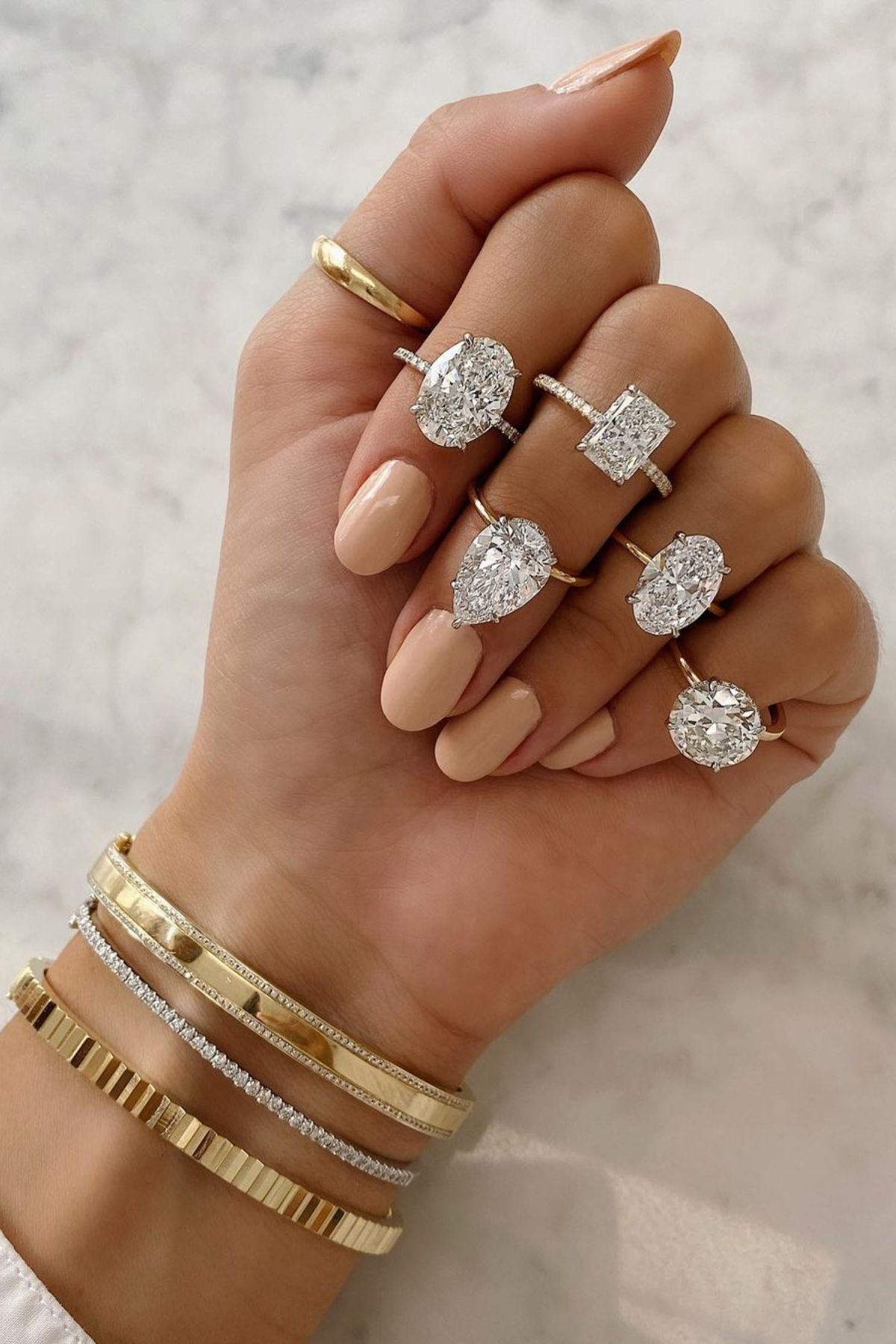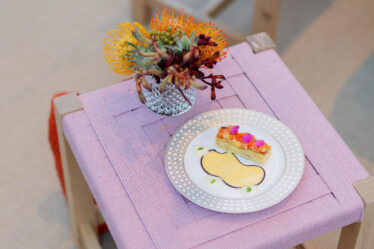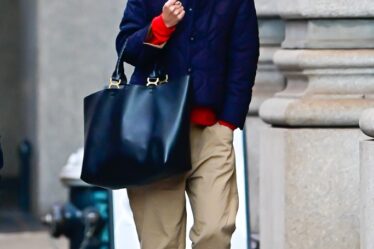
For decades, if you wanted to buy an engagement ring, and weren’t looking to pay Cartier or Tiffany prices, there were two main options.
First, you could head to your local jeweller — perhaps the same one where your parents or even grandparents bought their rings. The store might be named after the family that’s run it for generations.
Alternatively, you could head to the mall and check out the selection at Zales, Kay or Jared (all now owned by Signet Jewelers). The brand didn’t matter so much as the personalised shopping experience at the local jeweller, or the accessible price point offered by the chains.
Now, as Gen-Z and Millennials look to put a ring on it, they’re embracing a new choice: Direct-to-consumer jewellery brands that built their reputations on Instagram.
The past half-decade or so has seen the growth of a new kind of jewellery business, with a new generation at the centre. A cohort of mostly Millennial, mostly female founders are departing from industry traditions by taking the client relationship online. Even more radically, they’re putting themselves at the centre of their marketing.
These founder-influencers share photos of their children’s Halloween costumes alongside shots of the largest diamonds they sell. They answer questions about cut and clarity in their Instagram stories, while showing how they style items in their assortment for their own evenings out. They sell not just engagement rings, but other classic pieces like diamond studs or tennis necklaces, as well as new designs.
While these players are still small compared to luxury giants and mass market chains, they have caught consumers’ attention: Ring Concierge, founded in 2013 for example, has over 536,000 Instagram followers — more than Kay and Zales combined. They’ve also brought a new level of approachability to an industry that’s historically been synonymous for its opacity, and where men have long dominated.
“The best sales tool for our business is for me to just be me,” said Madison Snider, founder of DTC fine jewellery brand Fewer Finer. “There’s plenty of people out there that also like to wear a white T-shirt, jeans and a beautiful piece of jewellery with it or that live in a walk up apartment with three roommates and also want to have a really cool ring.”
Mainly operating at a price point above the mall chains but well below the luxury brands, these start-ups have room to grow: Online fine jewellery sales are expected to reach 18 to 21 percent of total sales by 2025, up from 13 percent in 2019, and outpace the overall market by three times, according to BoF and McKinsey’s 2021 Watches and Jewellery report.
Changing Industry Dynamics
Historically, the jewellery industry has been fragmented, particularly in comparison with other luxury sectors, such as bags or shoes. While industry powerhouses like Harry Winston and Cartier have always played an outsized role, much of the industry has been dominated by local, family-owned businesses, with relationships with suppliers often closely guarded by these incumbent players.
“In this industry, the most important thing is the relationships you have with your suppliers,” said Thomai Serdari, professor and director of the fashion and luxury MBA program at NYU’s Stern School of Business. “To really know the supply chain issues and who the reliable suppliers are, that’s what has made brands more competitive.”
In many ways, the new jewellery influencers are reflecting their target customer.
Women are buying jewellery for themselves — and they can connect more easily with a young, female founder than a man 20 years their senior, or to brands with ads centred on men giving diamonds to their wives or girlfriends.
Just over half of Millennial women buy jewellery for themselves, according to a survey from market research firm MVI Marketing. These founders see that trend reflected in their own sales: Nicole Wegman, the founder and CEO of Ring Concierge said that 70 percent of Ring Concierge’s fine jewellery purchases are made by women. Stephanie Gottlieb, who owns an eponymous DTC fine jewellery brand, said the majority of her sales are also self purchases.
As the price of other luxuries, from Rolex watches to Chanel bags soars, jewellers are pitching themselves as a within-grasp luxury, rather than a once-in-a-lifetime purchase.
“A huge misconception is fine jewellery has to be formal, something that you will pass down for generations,” said Amanda Gizzi, director of the trade organisation Jewelers of America. “It’s becoming less formal and more fun.”
New brands have found success marketing to women as both the person who will wear the item and the one who will buy it. The growing popularity of alternatives to mined diamond also marks a shift. Meg Strachan, the founder and CEO of Dorsey, a DTC jewellery brand founded in 2019 sells pieces containing lab-grown diamonds, sapphires, rubies, emeralds and more, said that evolving attitudes around lab-grown stones, for both consumers and the industry, have made it much easier to position them as a worthy alternative to their mined counterparts.
Founders as Influencers
Because fine jewellery carries a higher price point and as well as extra emotion (particularly in bridal jewellery), consumers are eager to get these answers before making a purchase. Deciphering what those terms mean and how they should impact your purchase often requires an expert.
“We’re selling such important and expensive pieces, we want our customers to feel like we’re looking out for them, we have good intentions and there’s a sense of authenticity and transparency there,” said Olivia Landau, founder and CEO of The Clear Cut, a DTC fine and bridal jewellery business.
This new generation of jewellery founders also approaches the education aspect from the perspective of what today’s jewellery customer is looking for, especially when it comes to the all-important engagement ring. Gottlieb, for example, has highlights on her Instagram page for each diamond shape, where she shares example photos and tips about the intricacies of each shape. An oval, for example, is a stone that can more easily hide imperfections, so buyers can go for lower clarity and a larger size. She’ll also show stones side-by-side to demonstrate the difference between carat sizes or styles, like an elongated cushion cut versus a square cushion cut.
“Ninety-nine percent of women just want the biggest diamond their boyfriend can afford them,” said Wegman. “And in order to get that you have to drop in other areas [like colour or clarity]. So a lot of my communication is to guide them to that ultimate goal.”
Social media isn’t just an educational tool for current clients, but for would-be ones, too.
Besides personal posts, Gottlieb said that the posts that receive the highest levels of engagement are those that dive into the jewellery-making process, such as before or afters, previews of upcoming items or information about how to go about making your own jewellery-buying decisions.
“Every time you drop knowledge, people get excited about it,” said Gottlieb. “And that does inevitably lead to a purchase because they’ll think back and say ‘Stephanie is the one who taught me this, so I should buy it from her.’”



